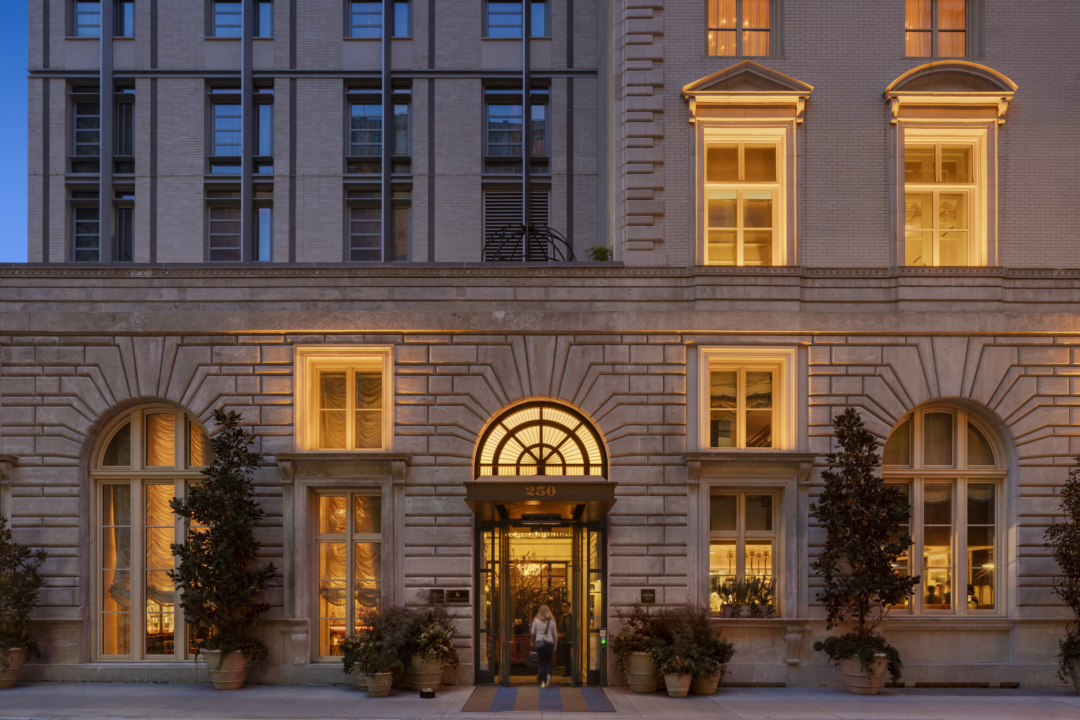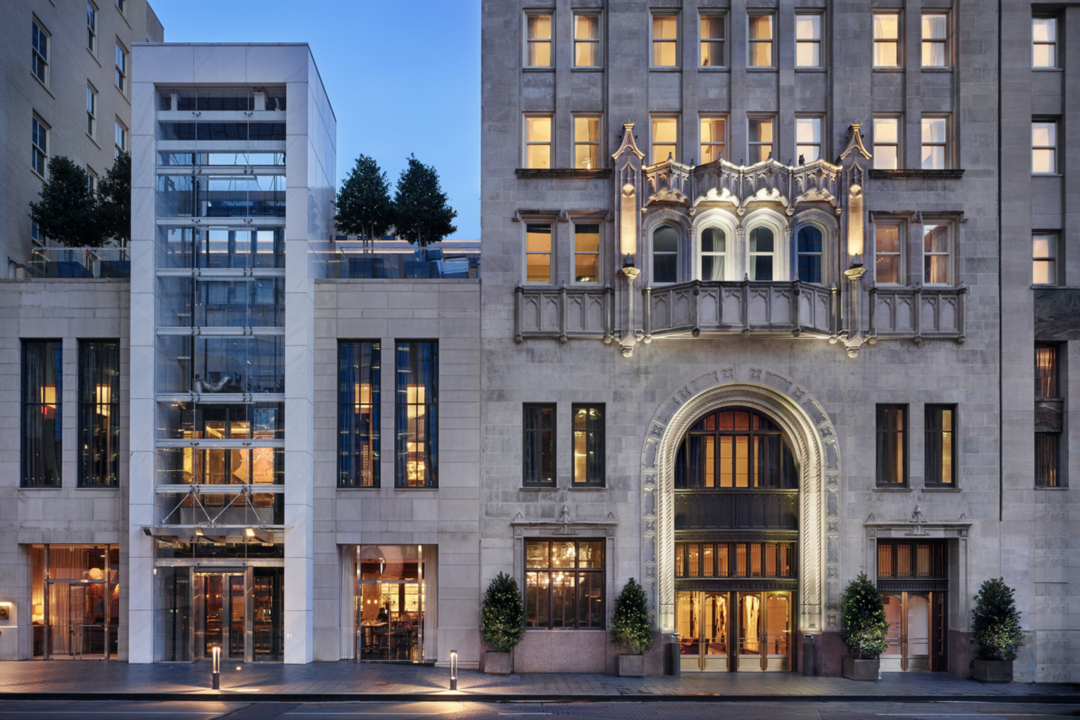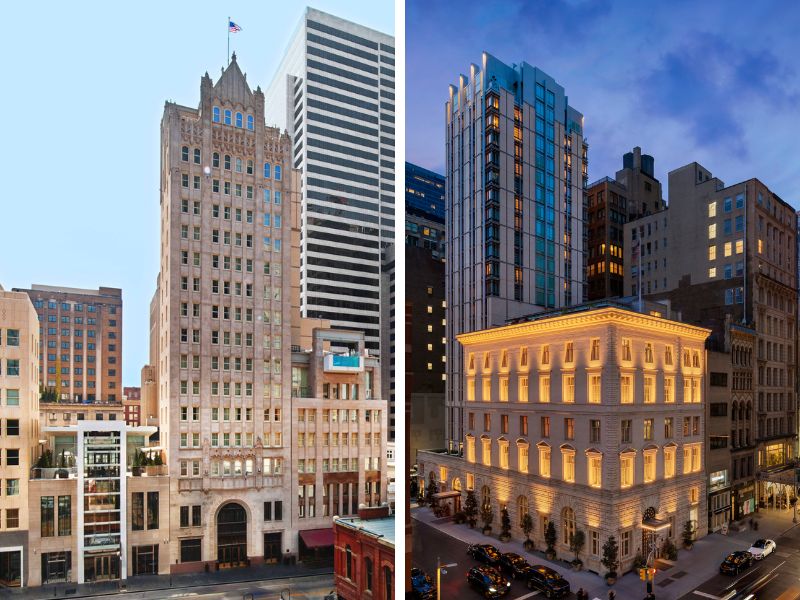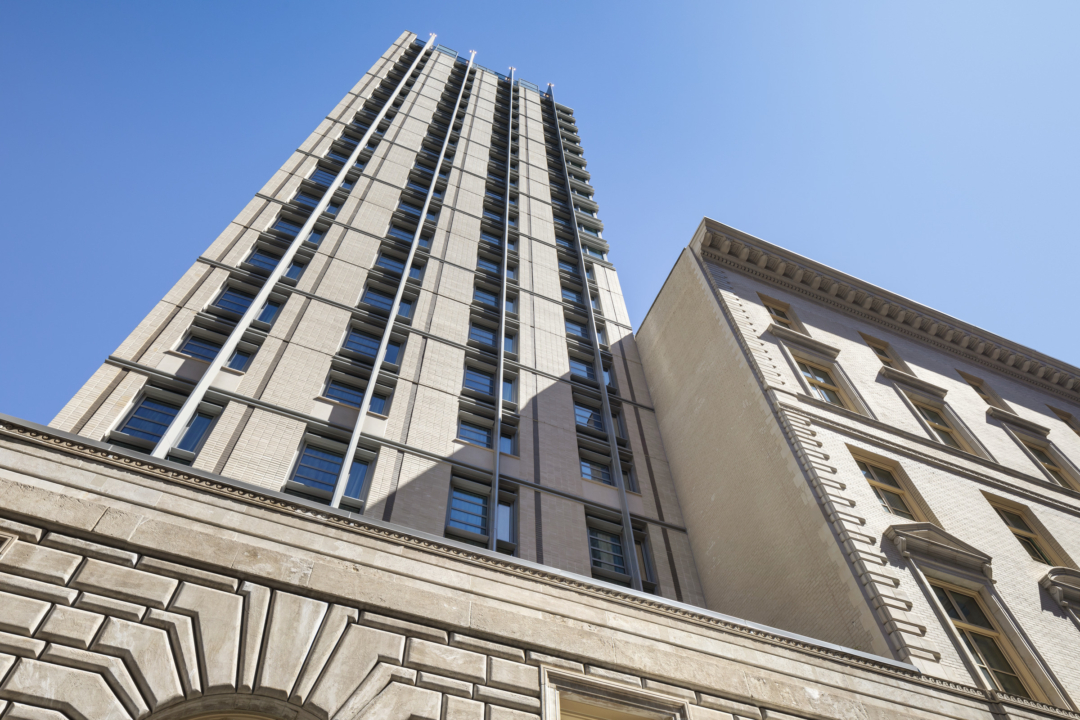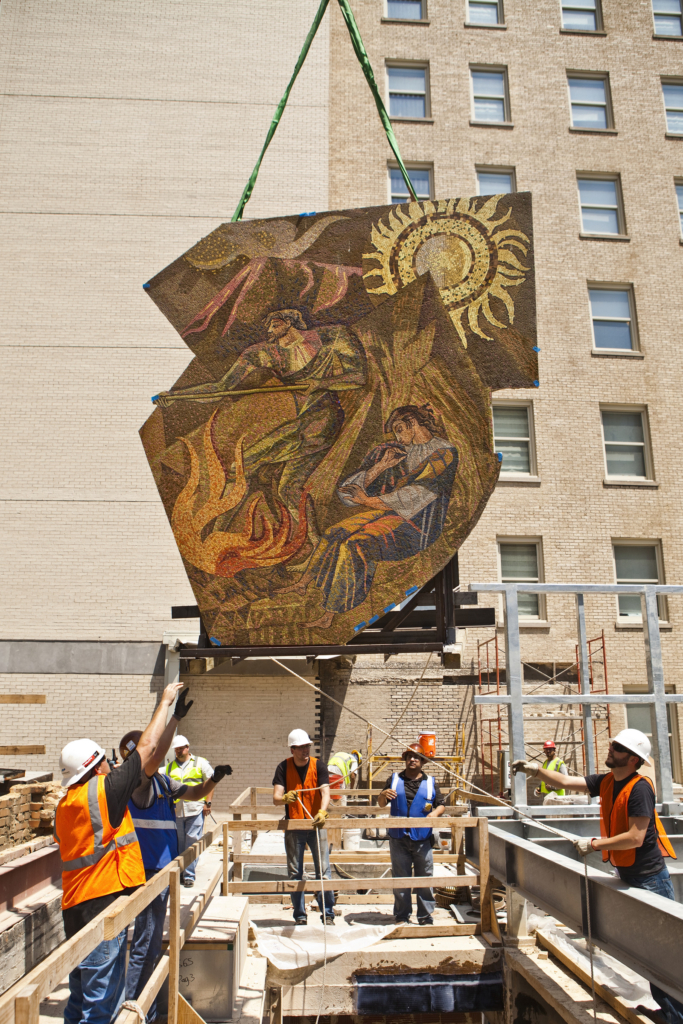A street-level glass elevator provides another dramatic intervention, ascending visibly along the building’s exterior and connecting guests to an indoor-outdoor rooftop space. Beyond aesthetics, The Joule has played a catalytic role in revitalizing Main Street, helping transform a dormant block into a cultural and social hub.
As large US cities grow more saturated and expensive, developers are increasingly looking to mid-sized urban markets like Cleveland, Detroit, Kansas City, and Tulsa. These cities offer a deep inventory of historic buildings ripe for rescuing, lower development entry costs, and distinctive cultural identities—all of which align with the values of today’s desire for local flavor in hospitality destinations.
For travelers, these places offer vibrant, walkable downtowns with a sense of discovery and authenticity. For hoteliers, they present opportunities to test bold ideas and make real impact to the guest experience through thoughtful design.
Craftsmanship and materials from the past often can’t be replicated, which means new elements must complement—not compete with—the original. The most successful projects embrace contrast, allowing history and modernity to sharpen one another. Historic facades, intricate woodwork, and artisanal details ground the experience. Bold additions bring freshness, drama, and a forward-looking identity.
These projects uplift their neighborhoods. Adaptive reuse can reenergize underutilized structures and forgotten corners of a city, generating pride, increasing foot traffic, and supporting new cultural and commercial ecosystems. Adaptive reuse and contextual infill aren’t simply methods—they’re philosophies. When done well, they allow history and innovation to coexist, creating hotels that are not only smarter and more sustainable, but also more soulful and unforgettable.
